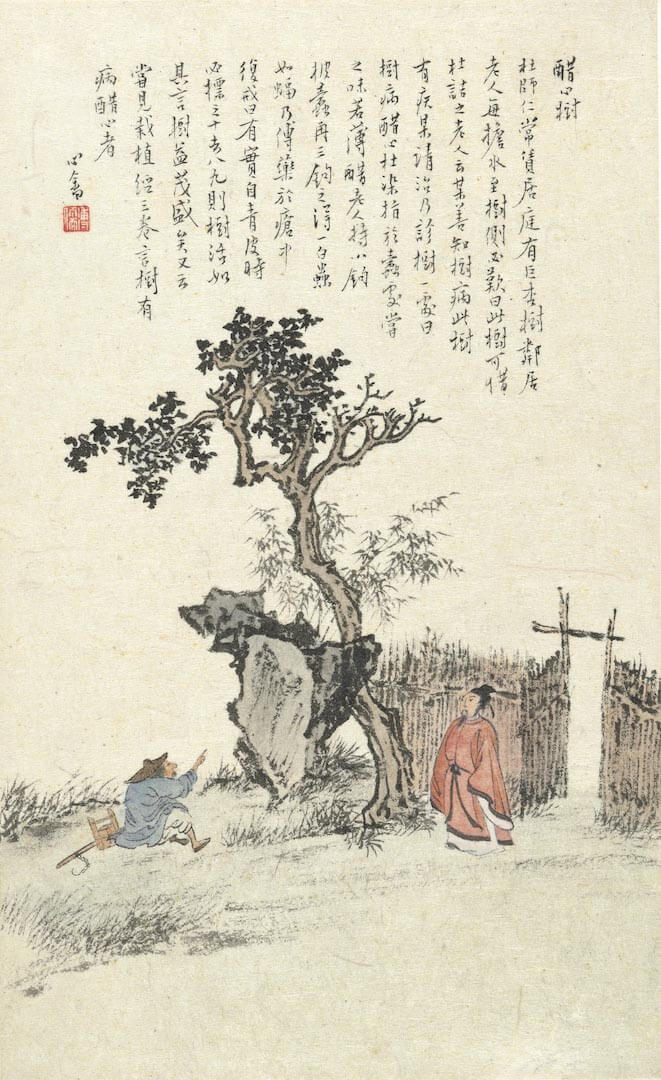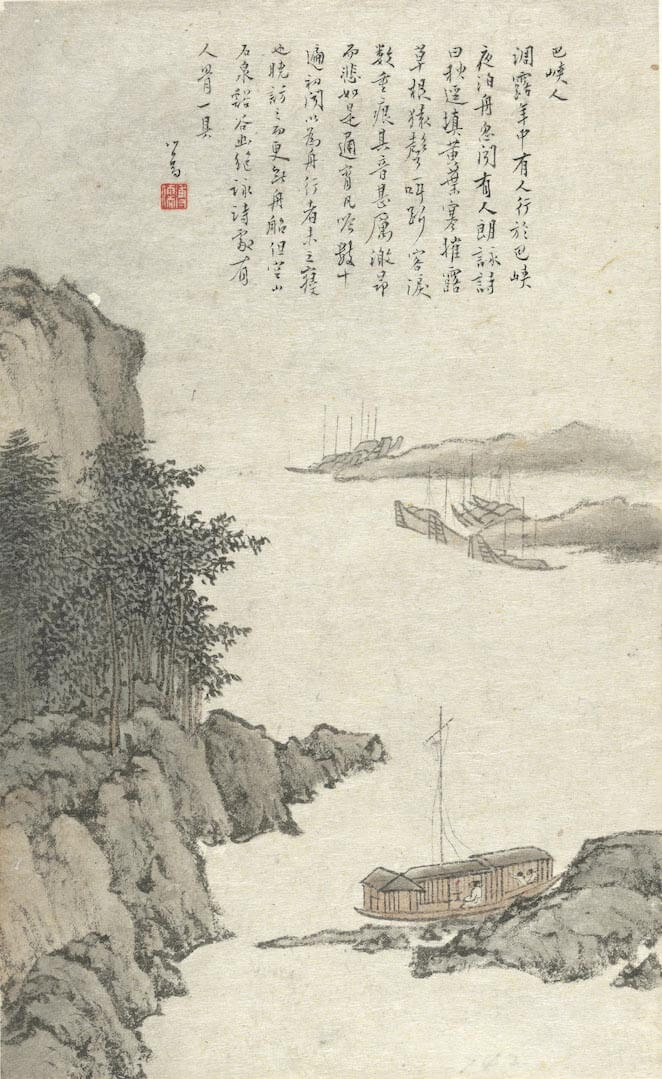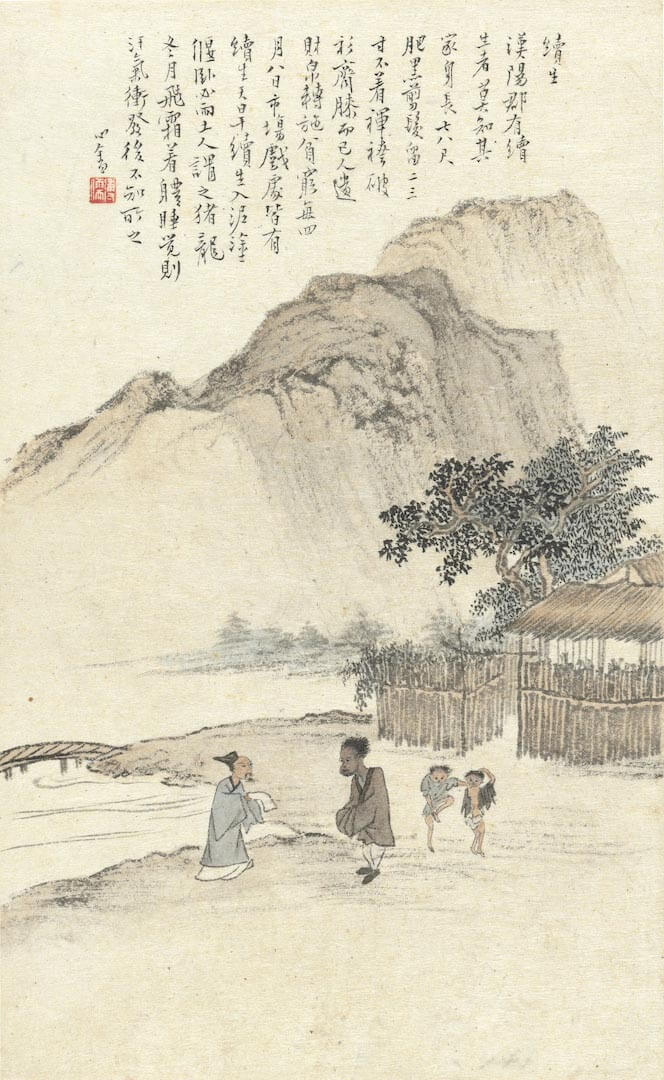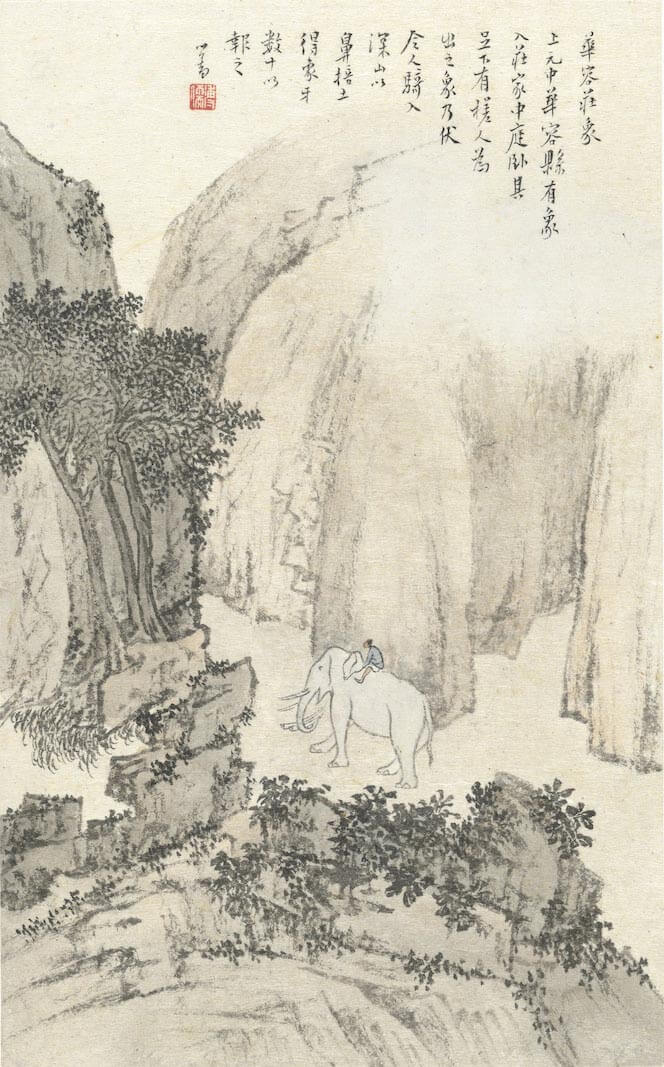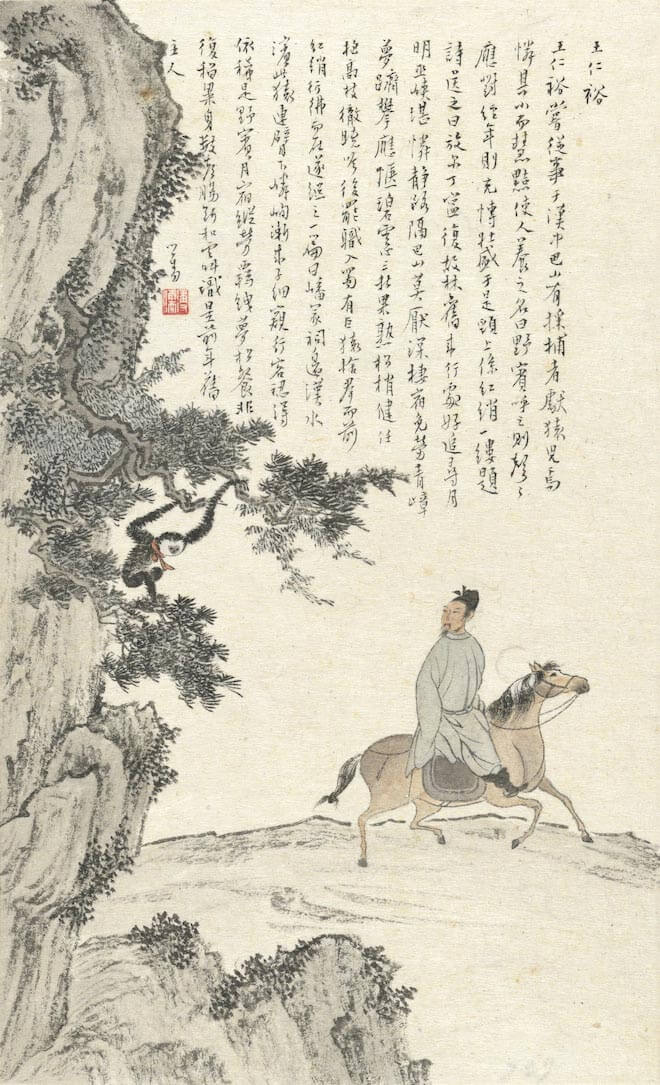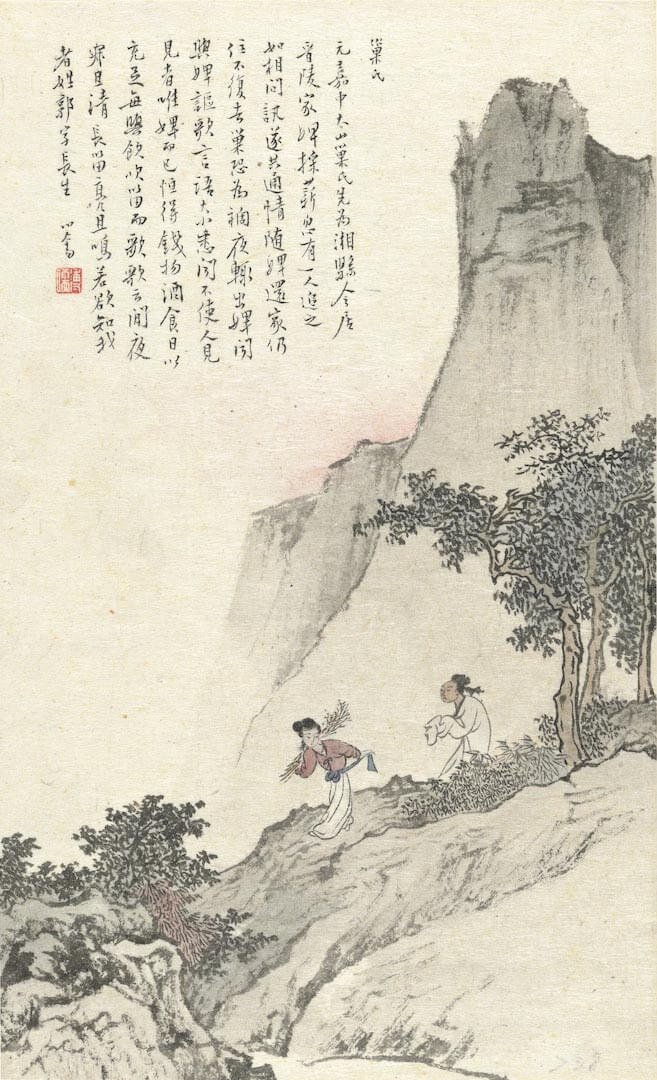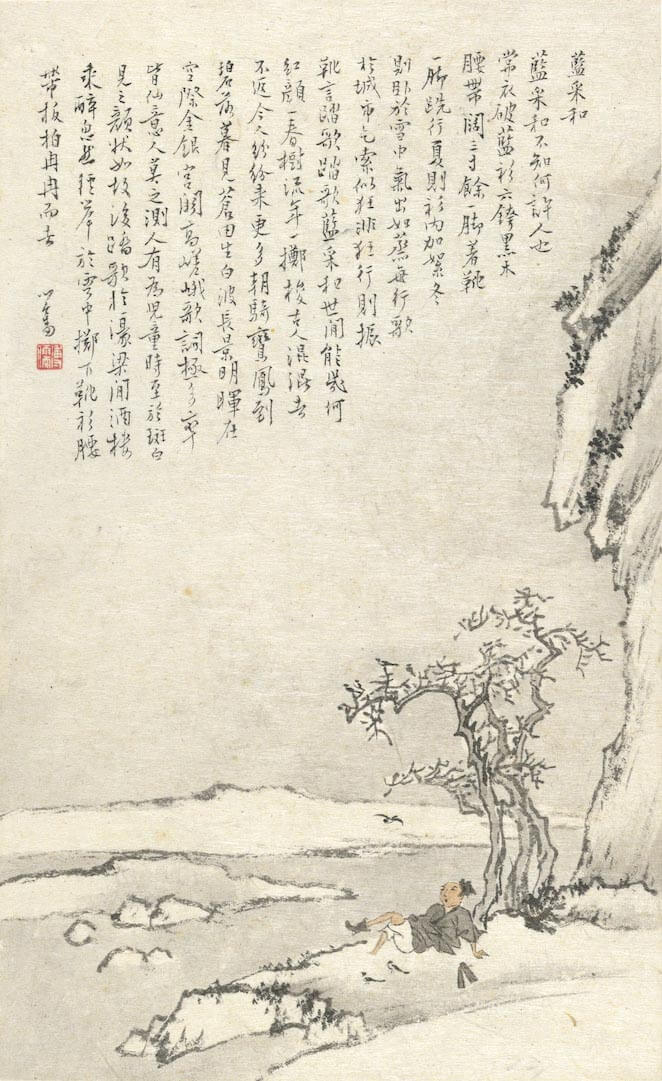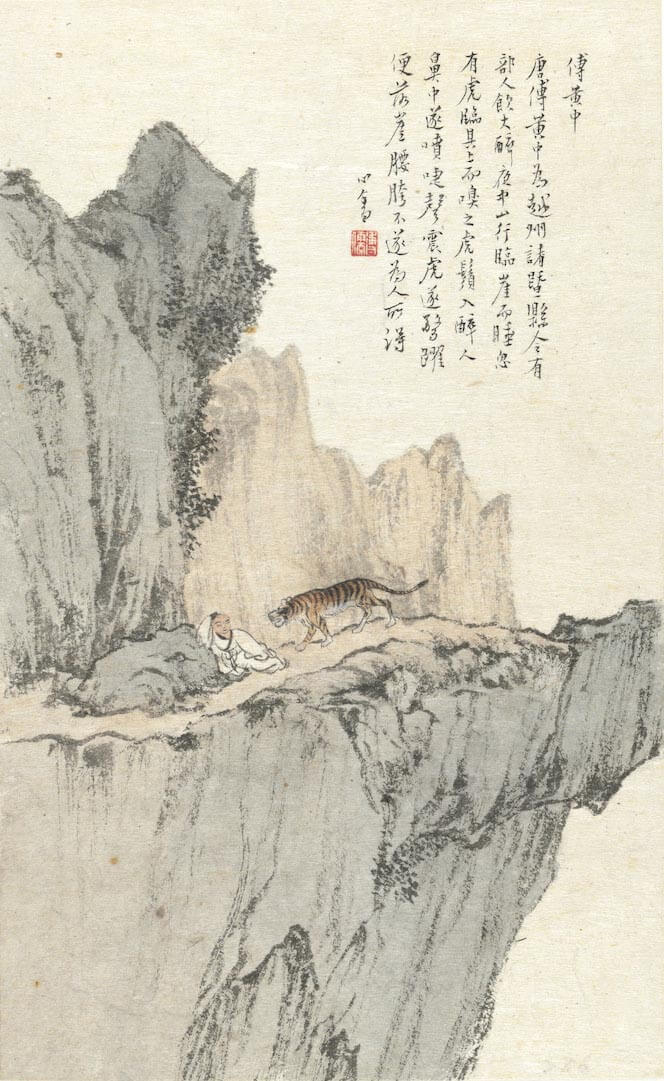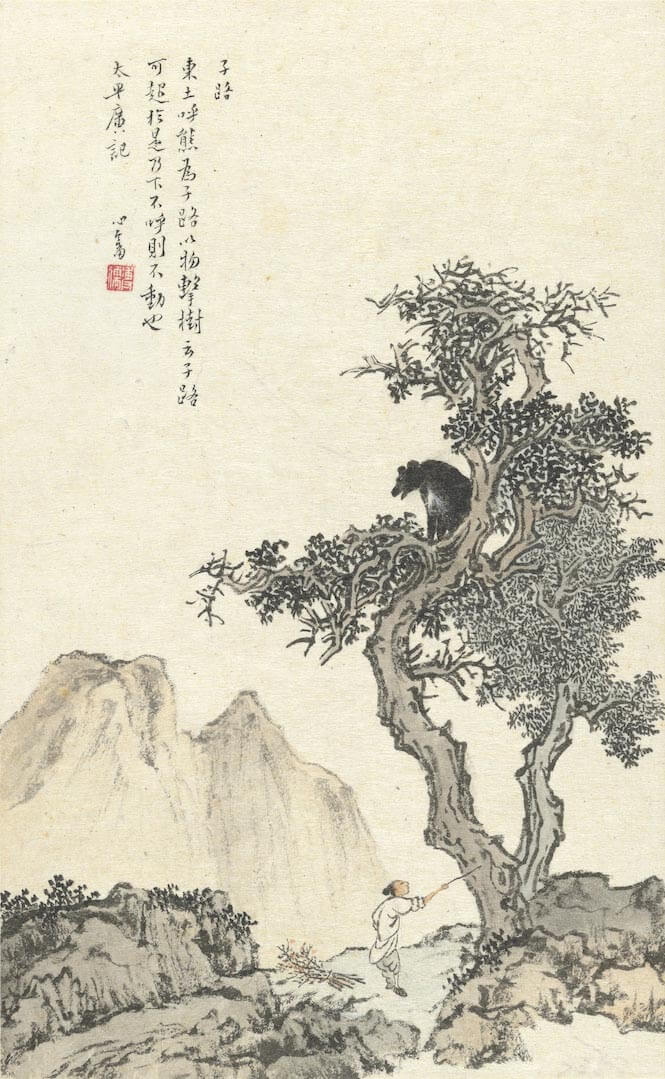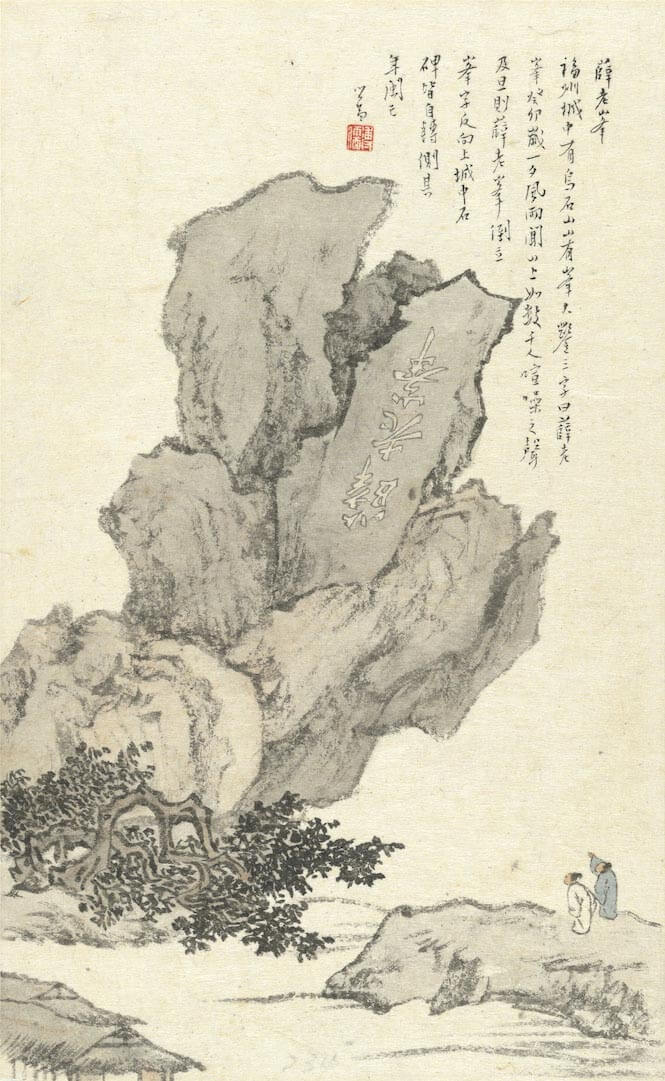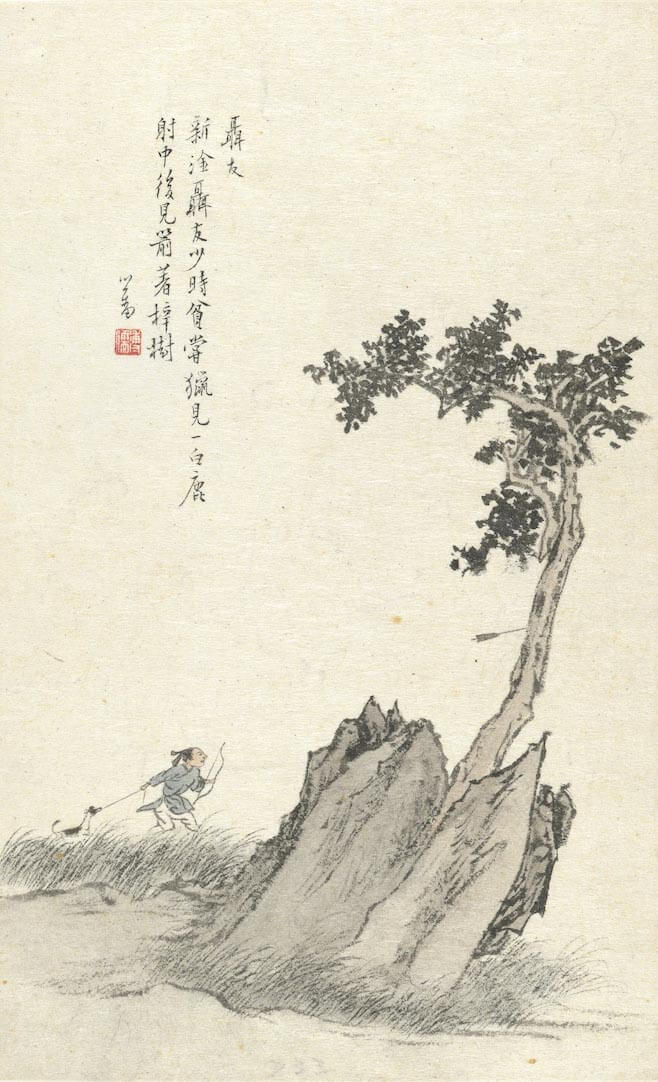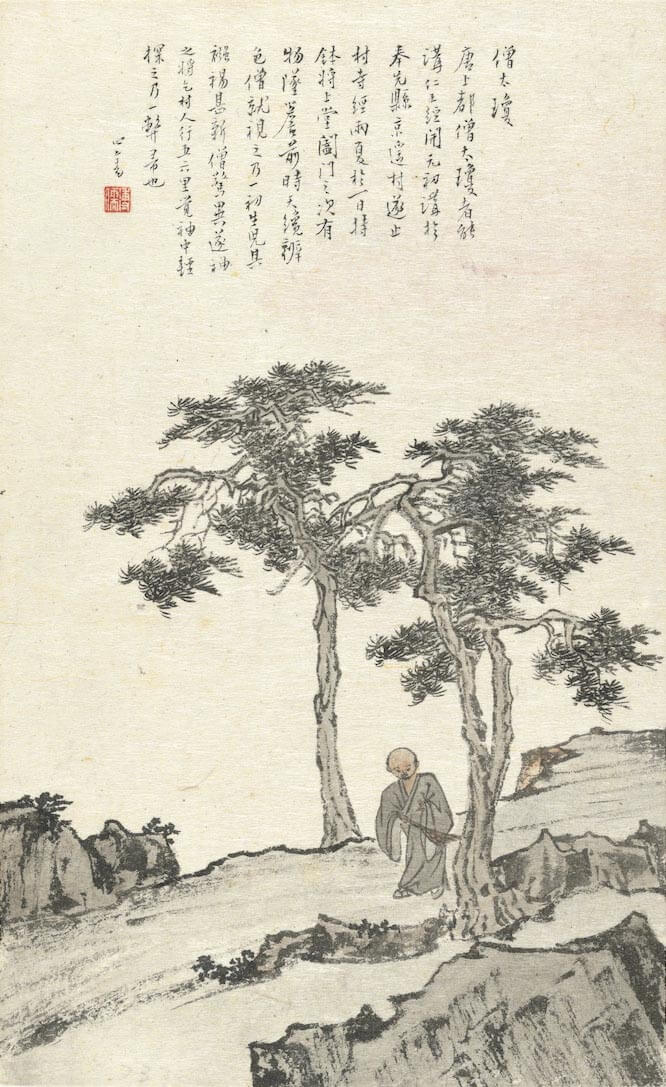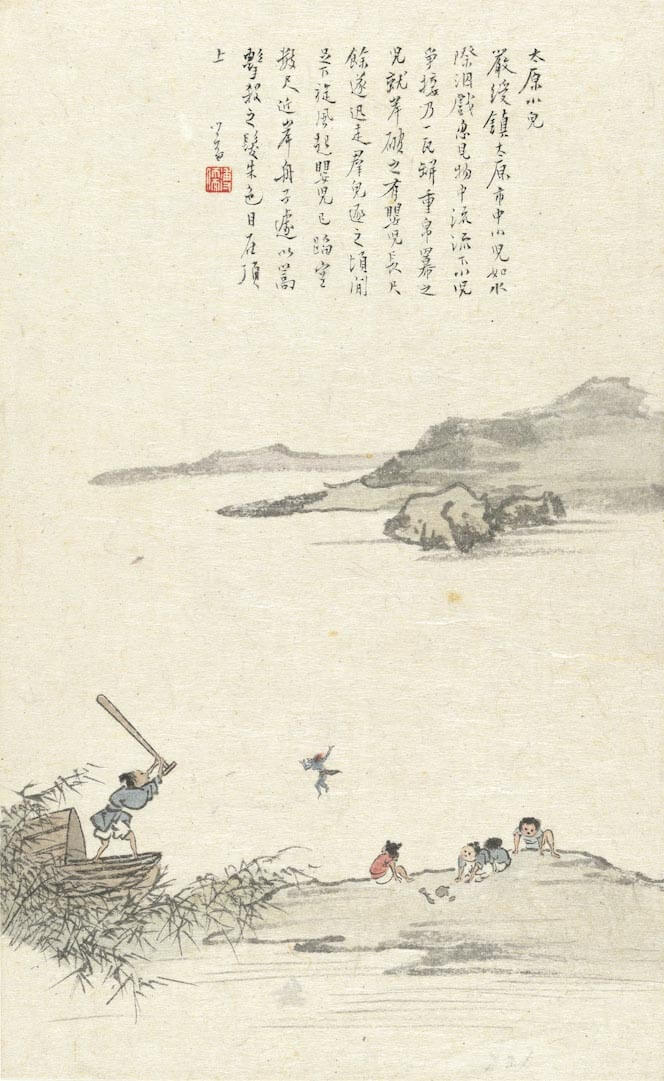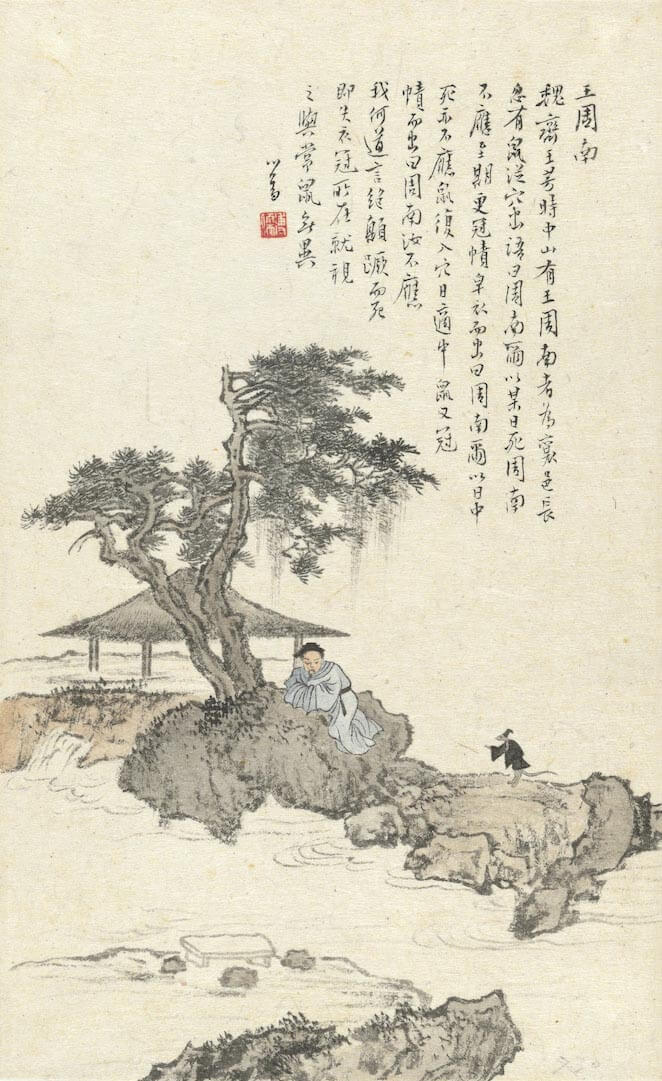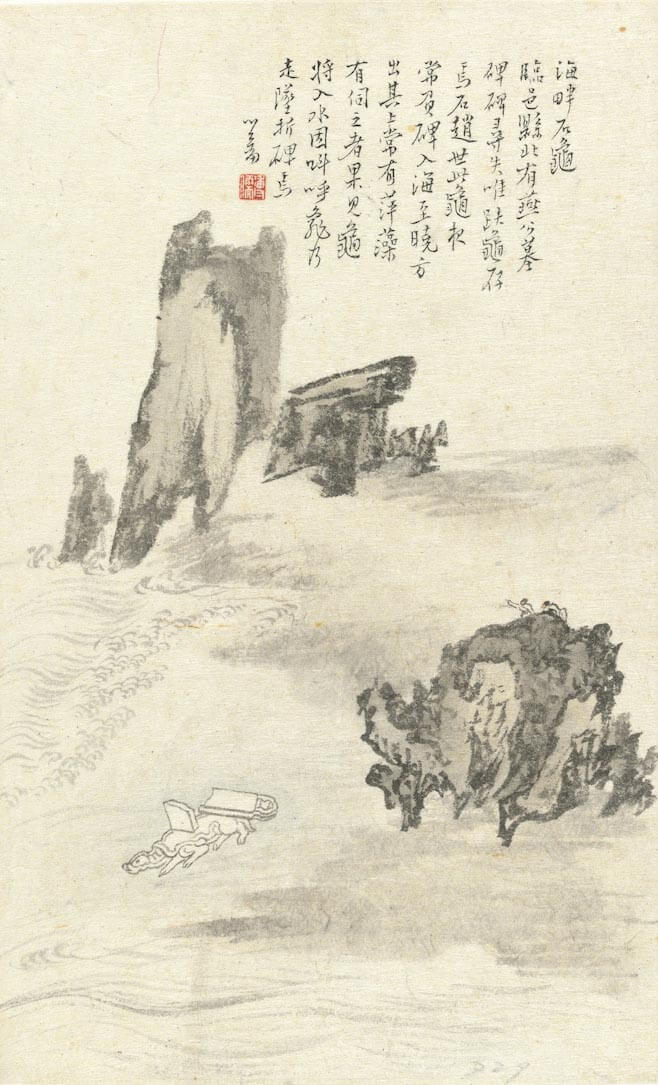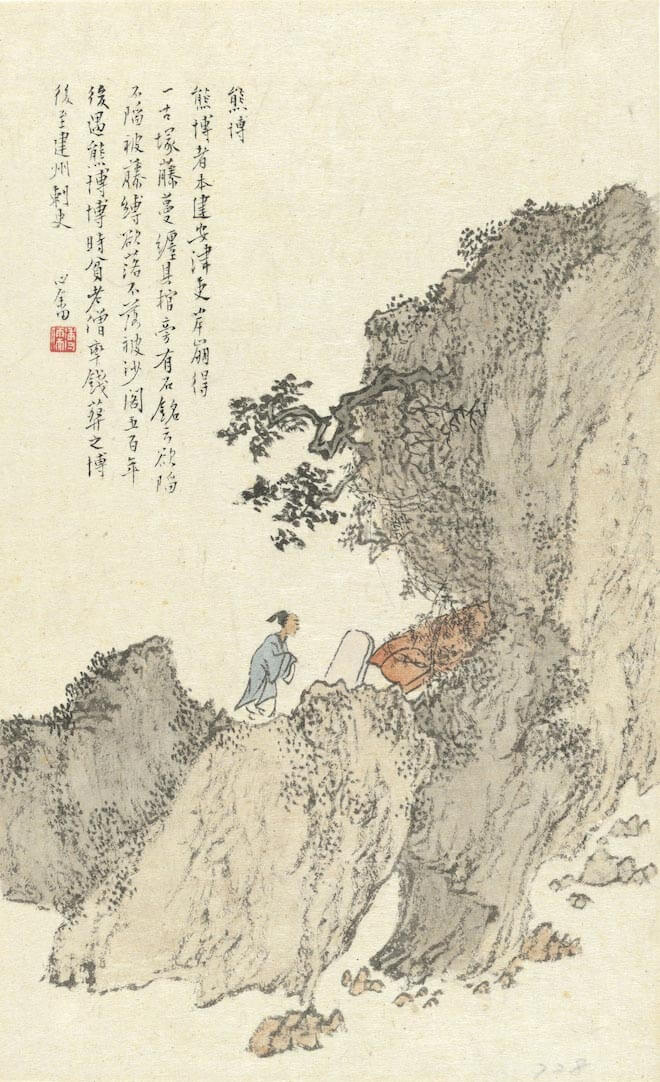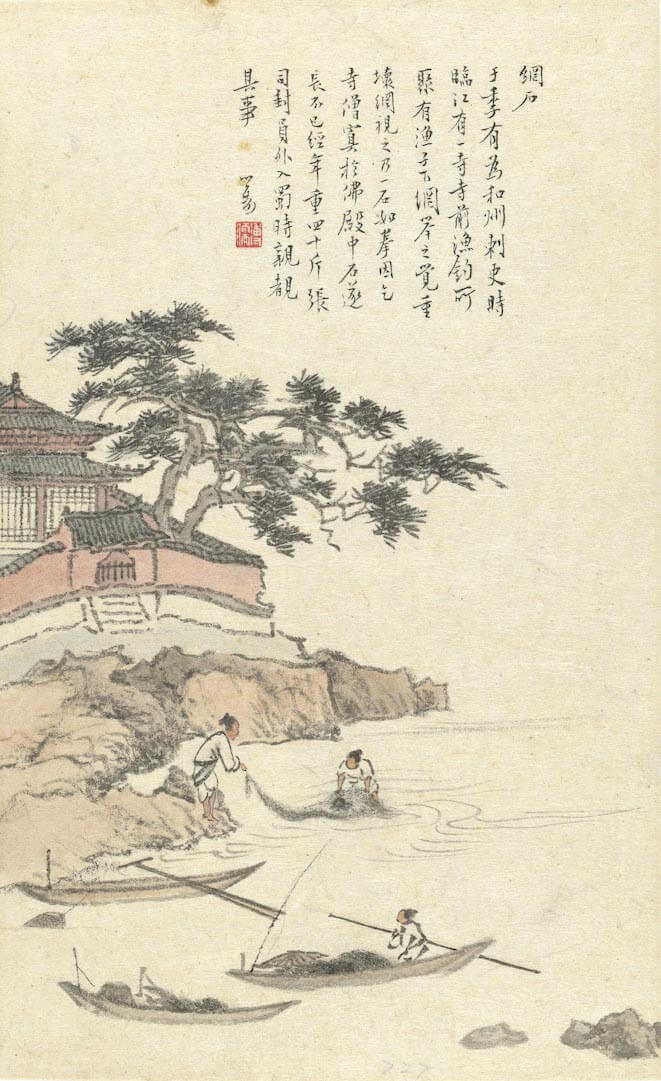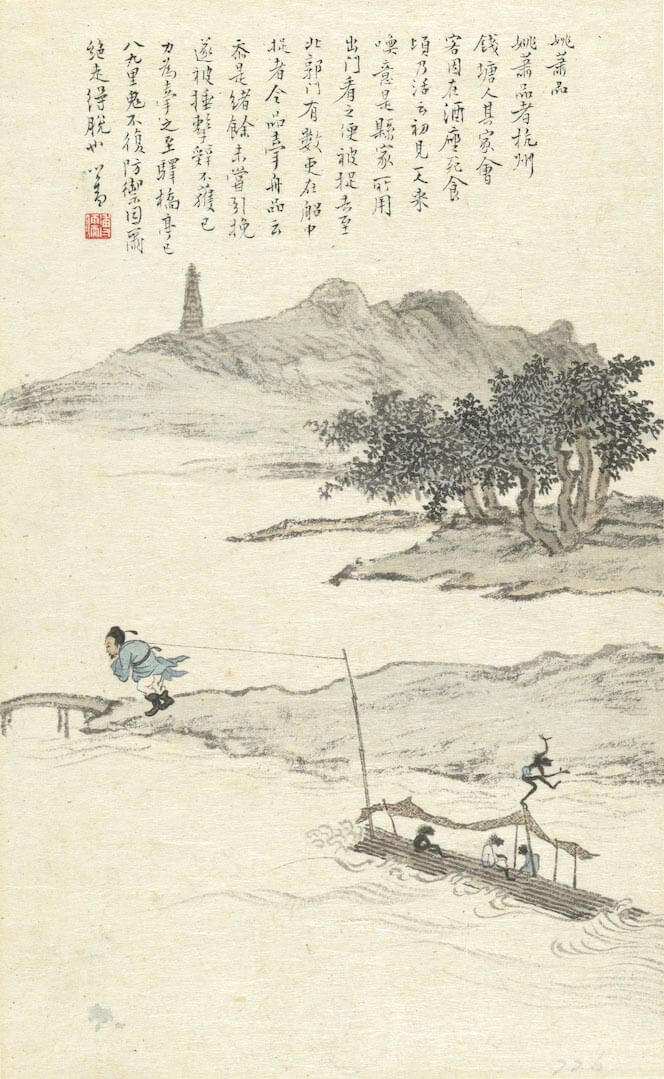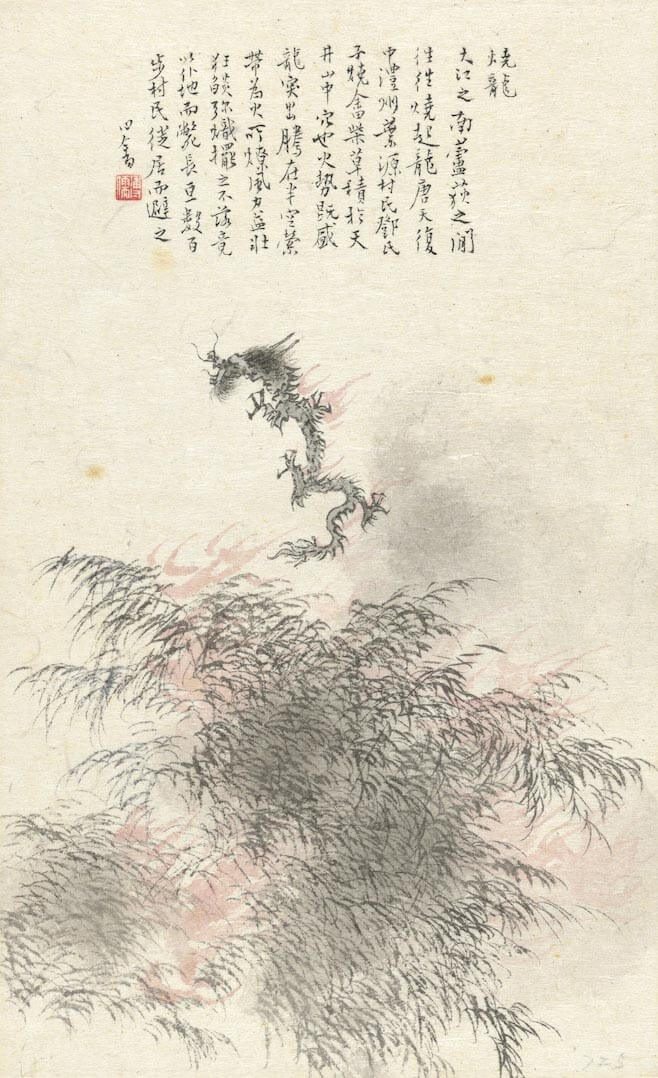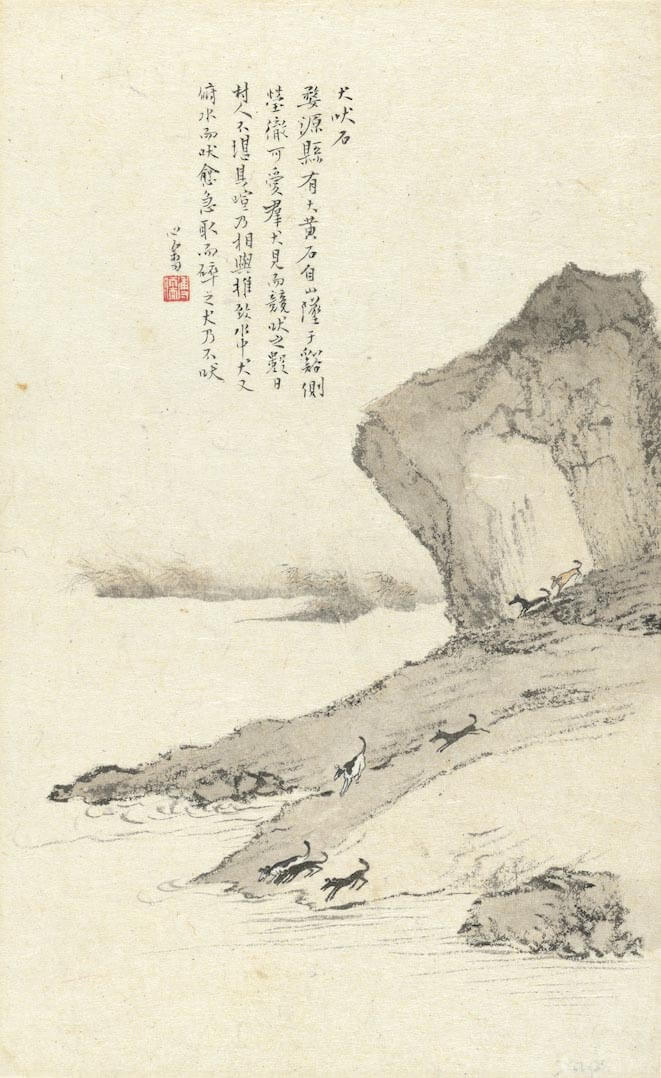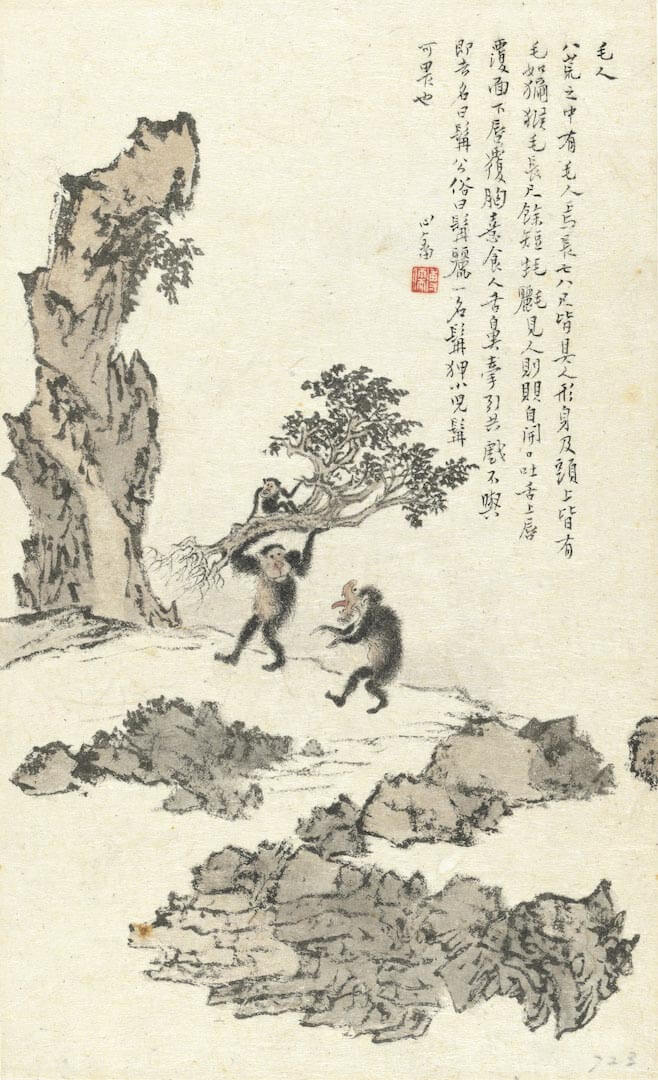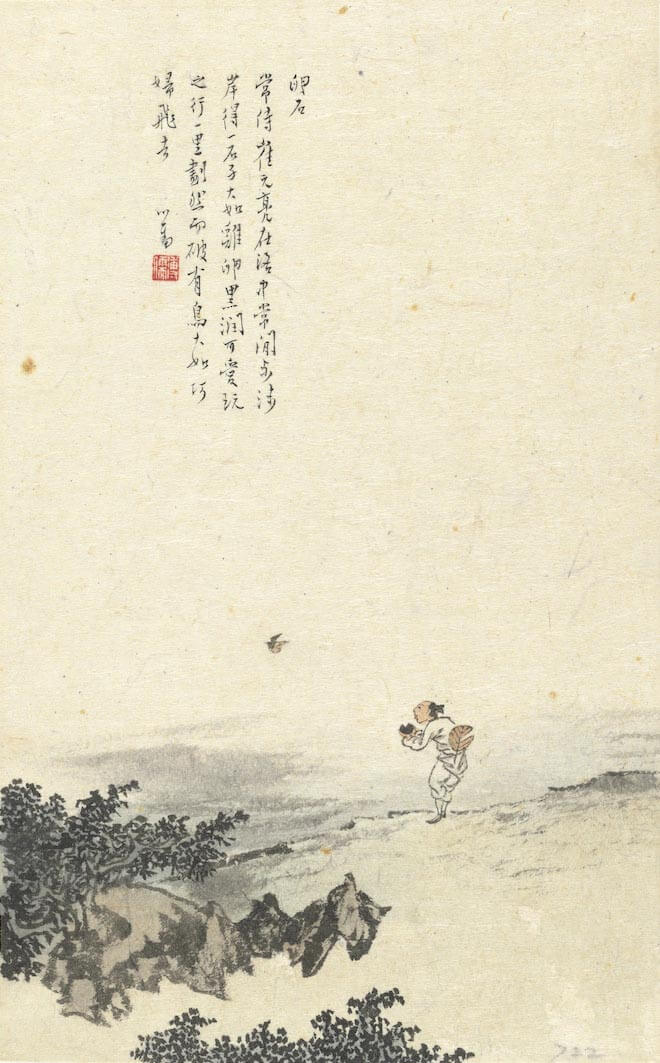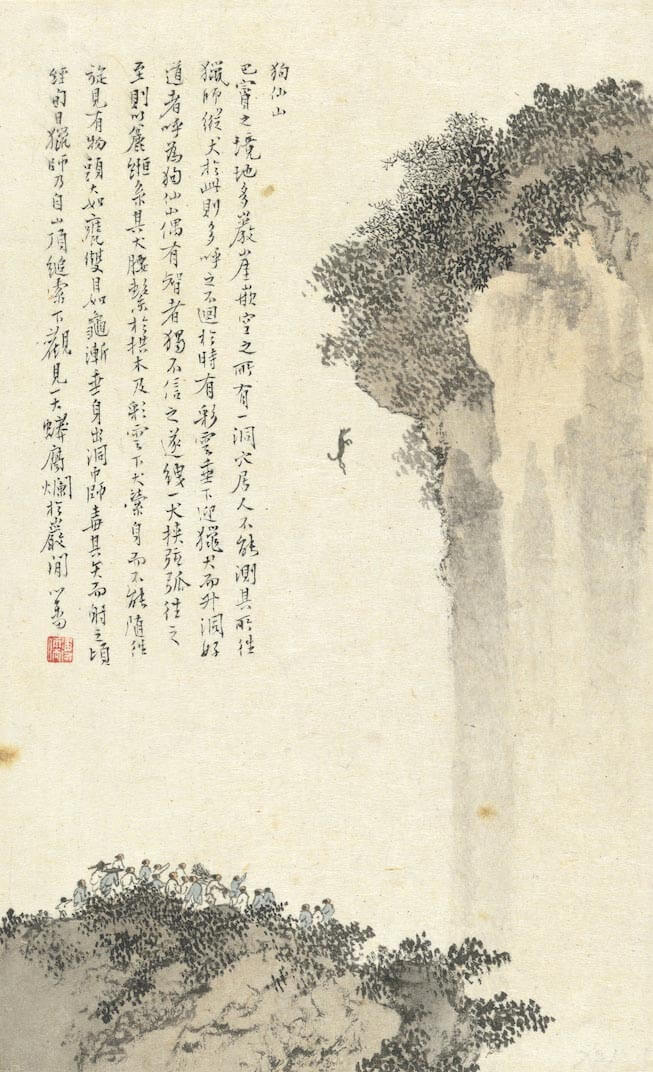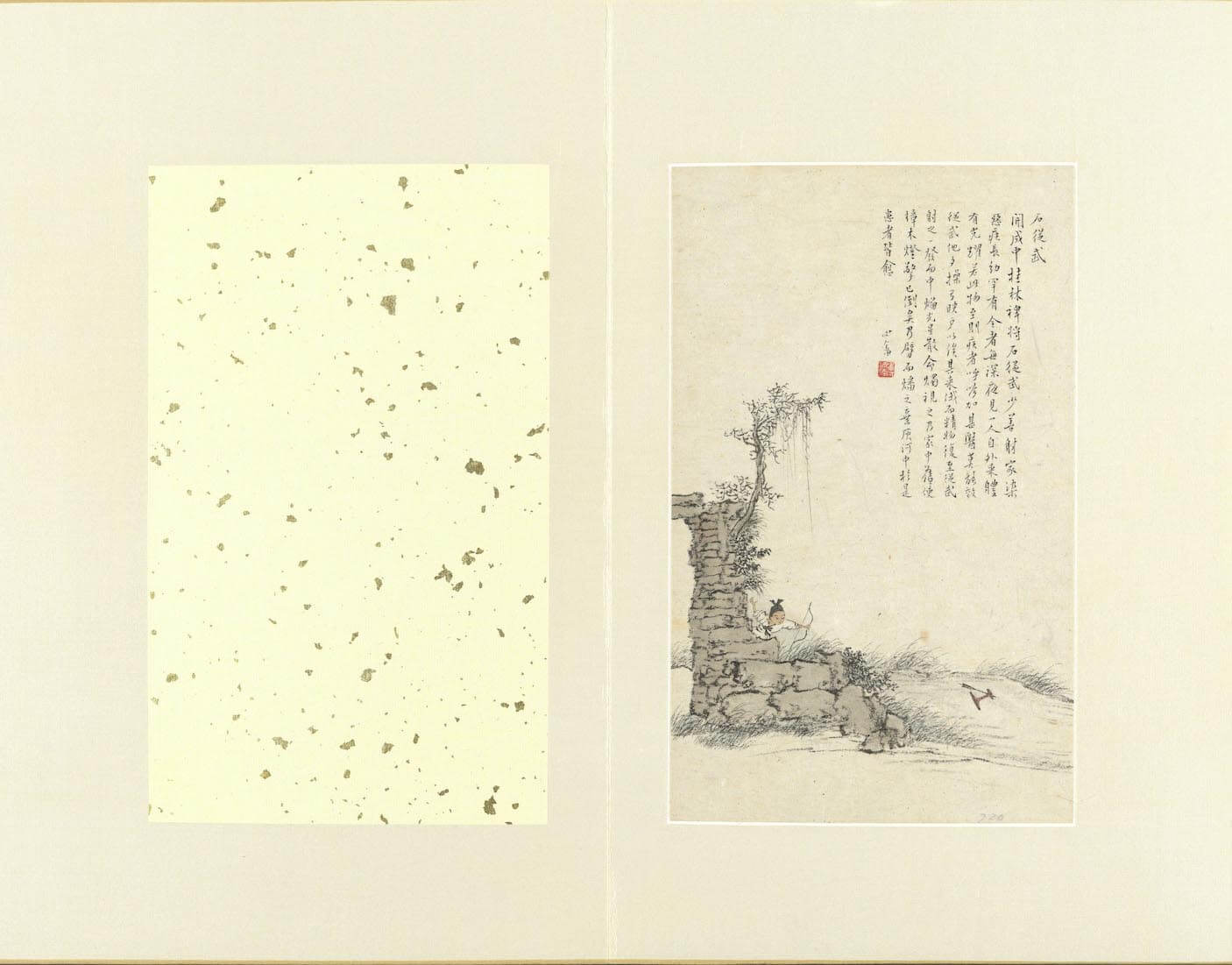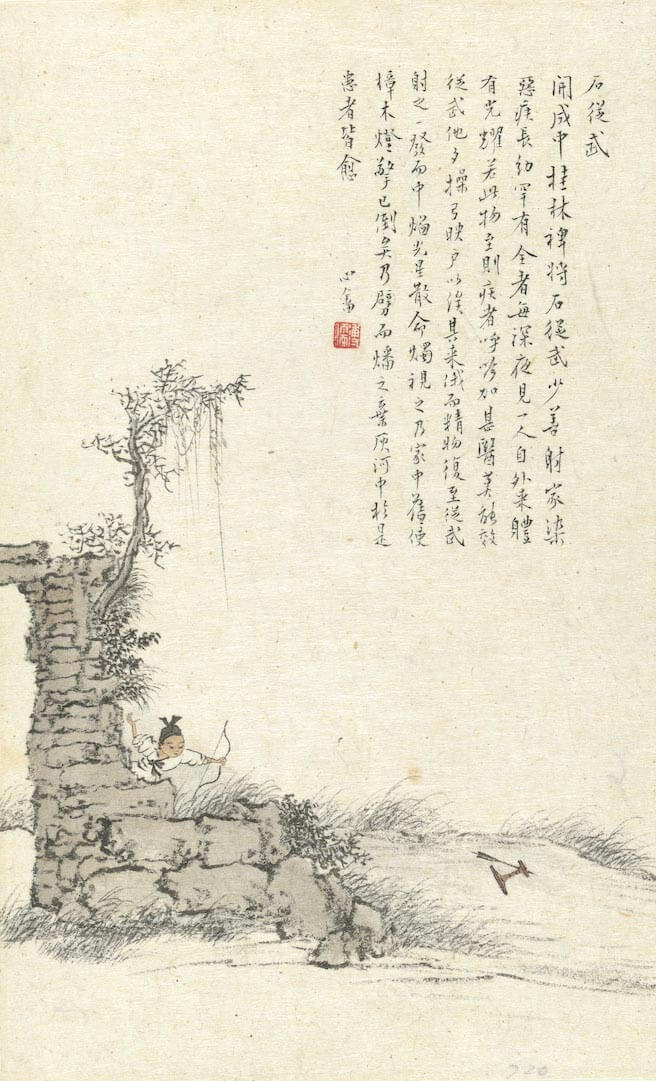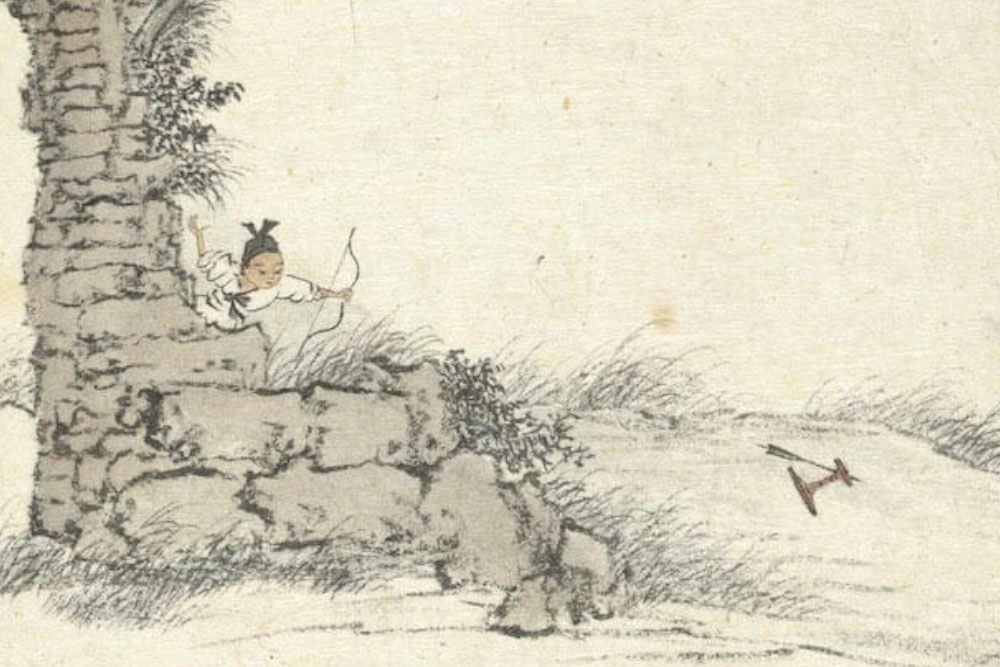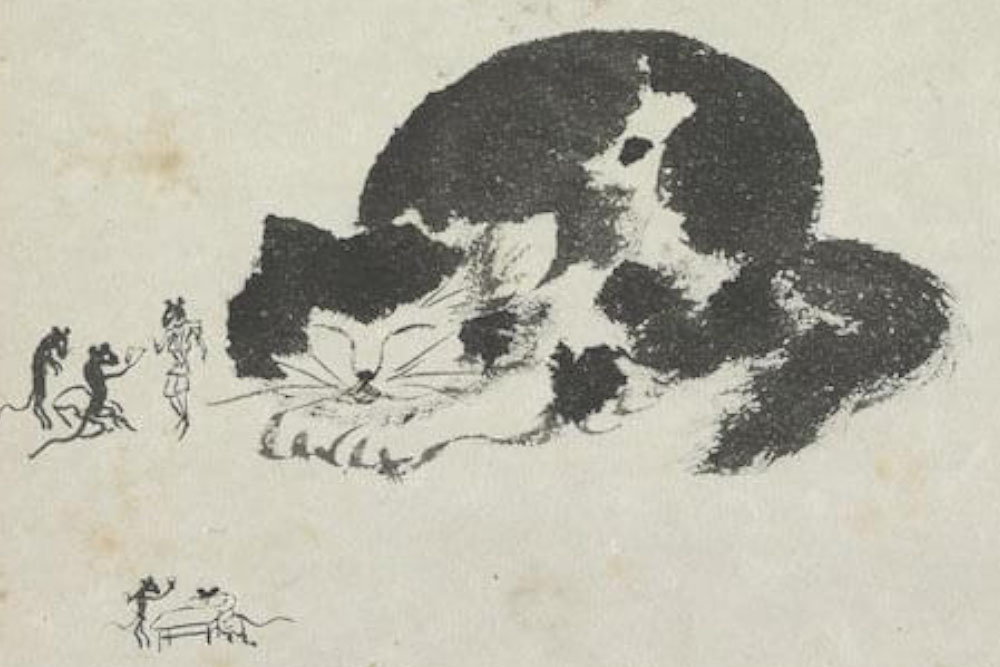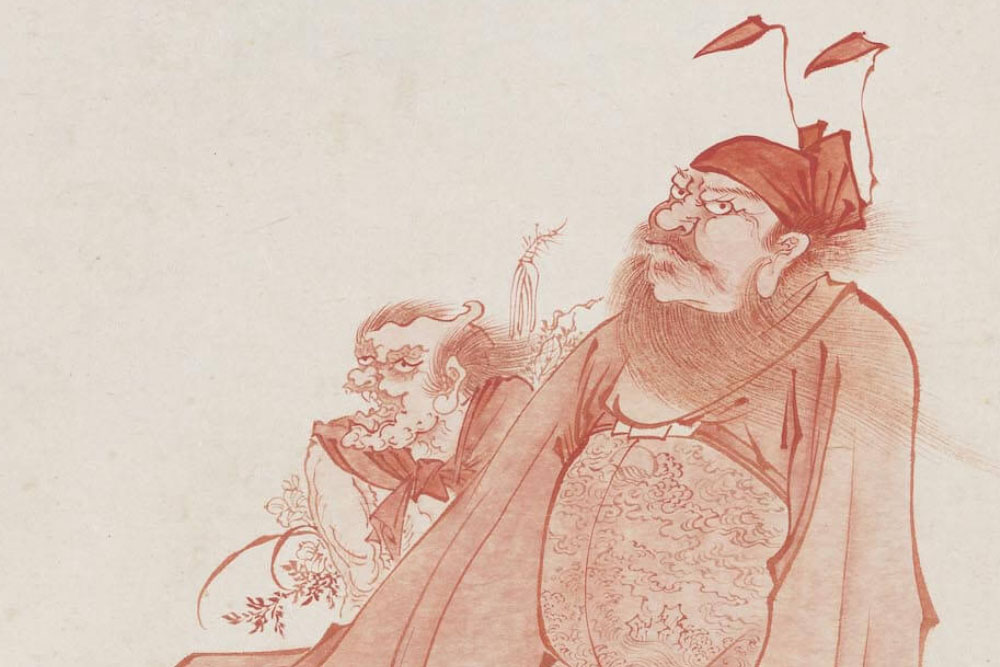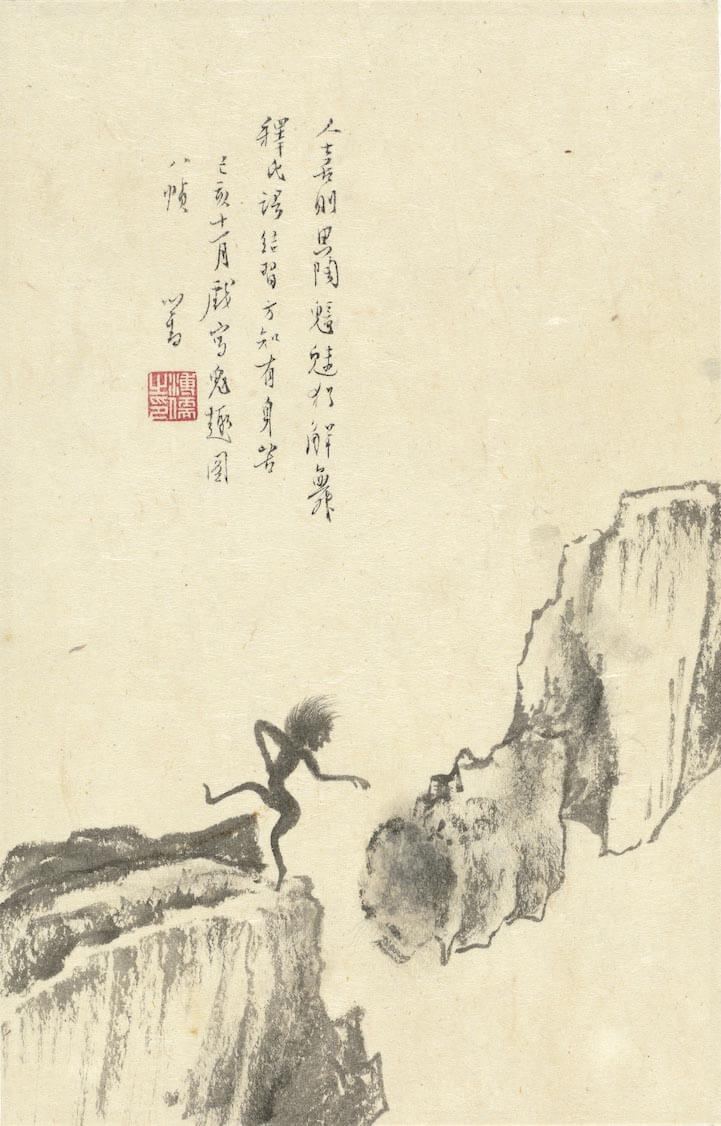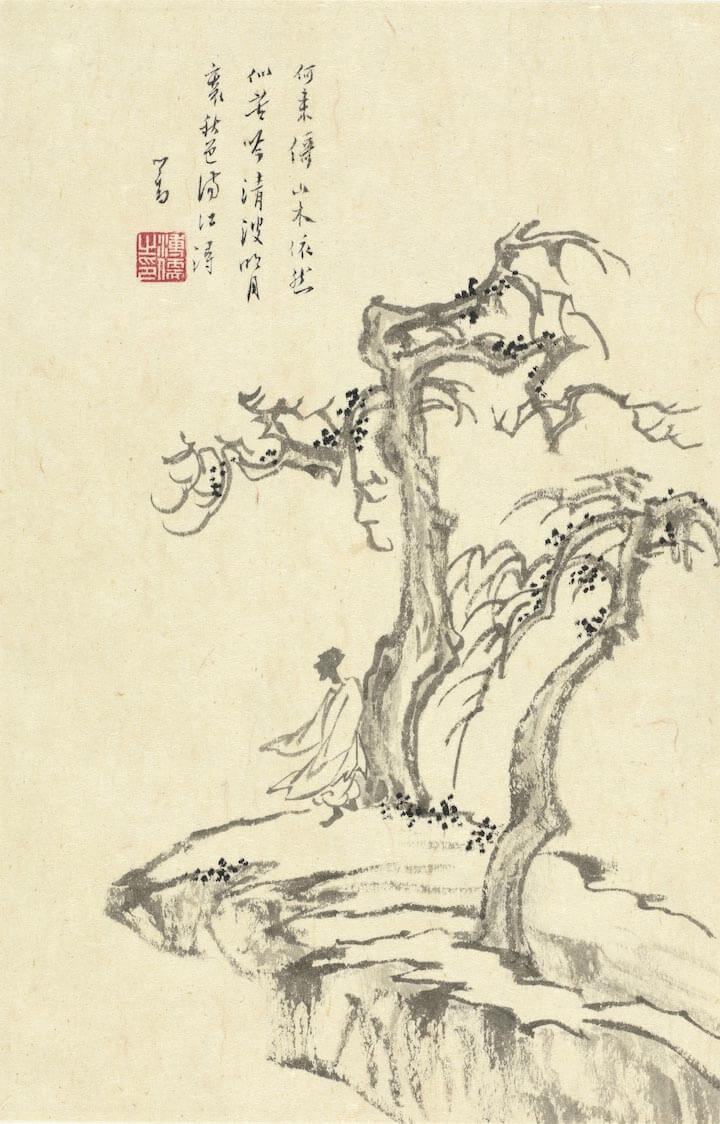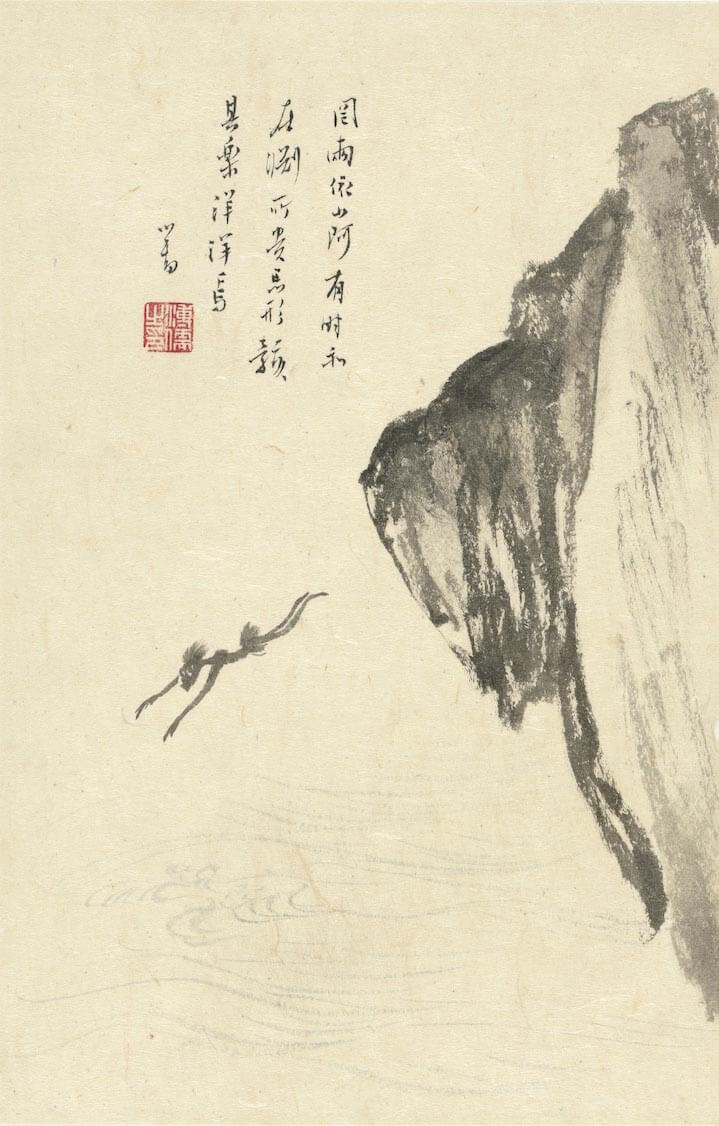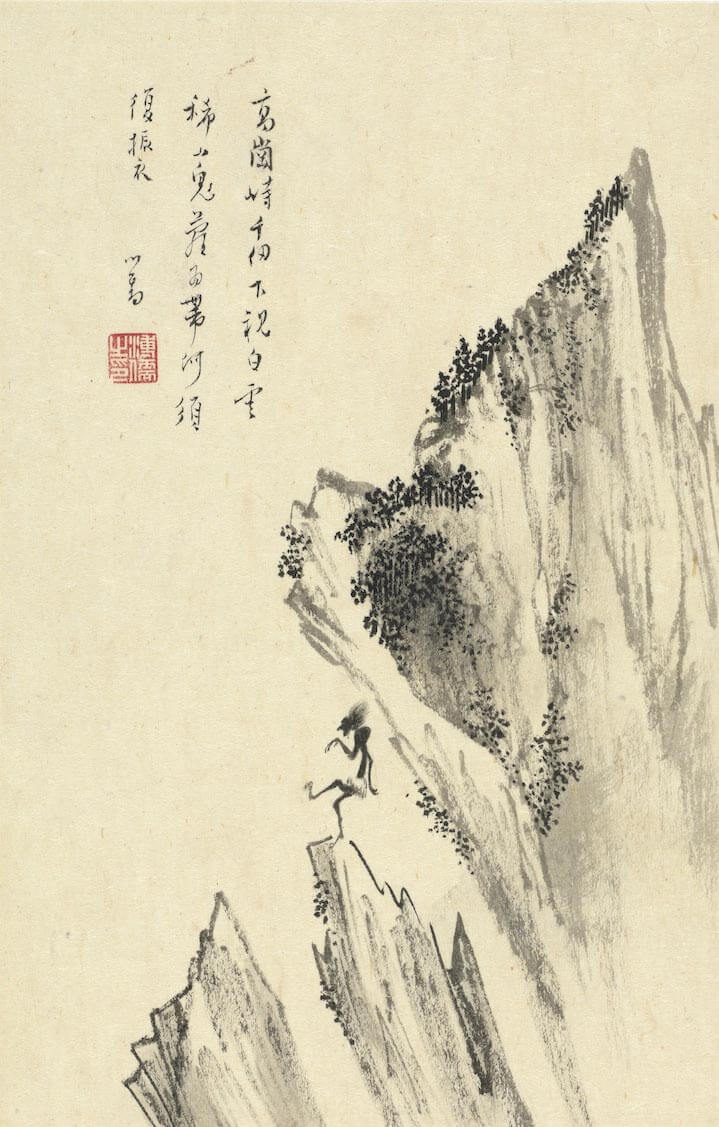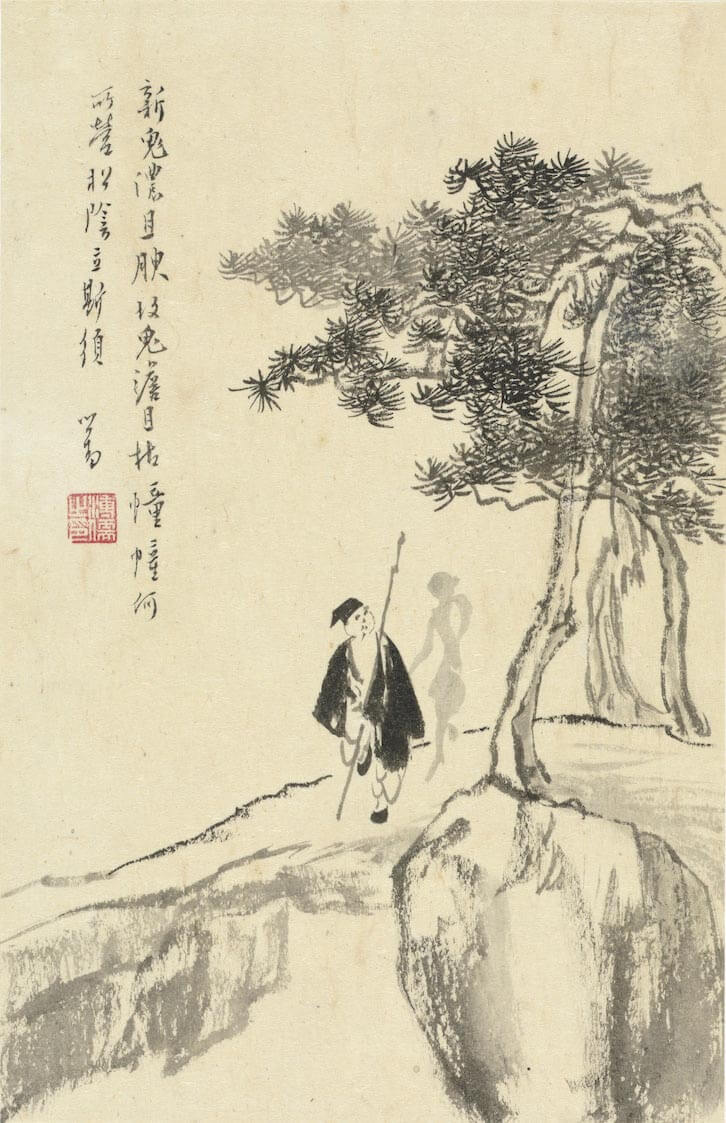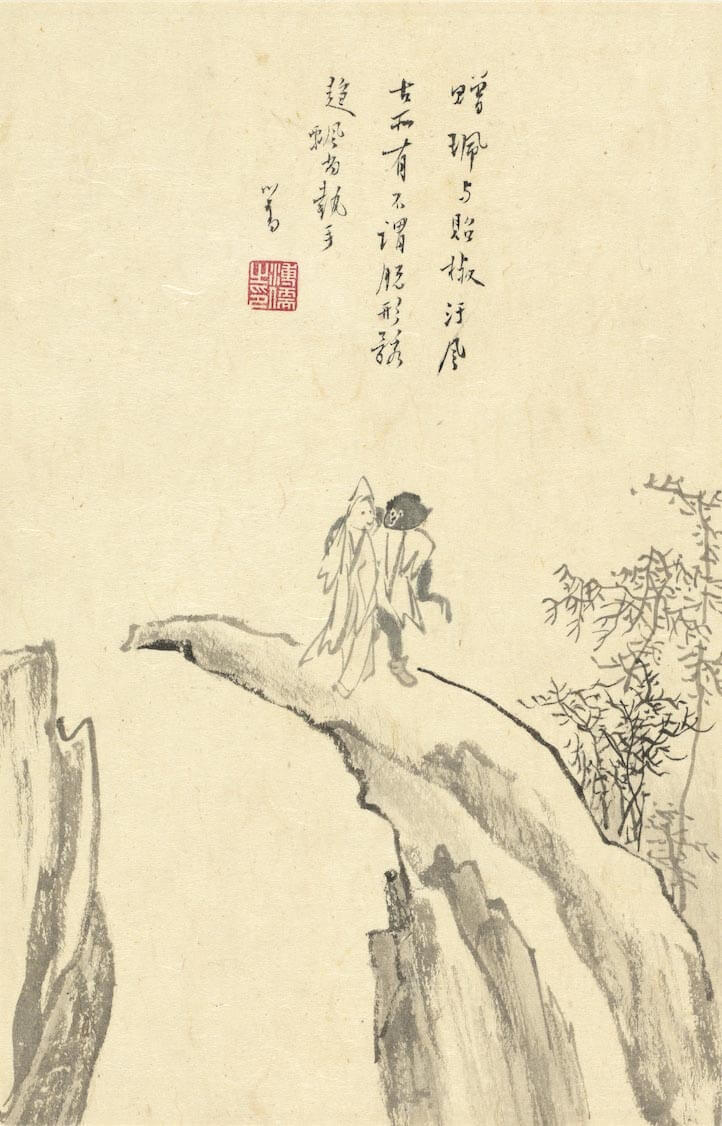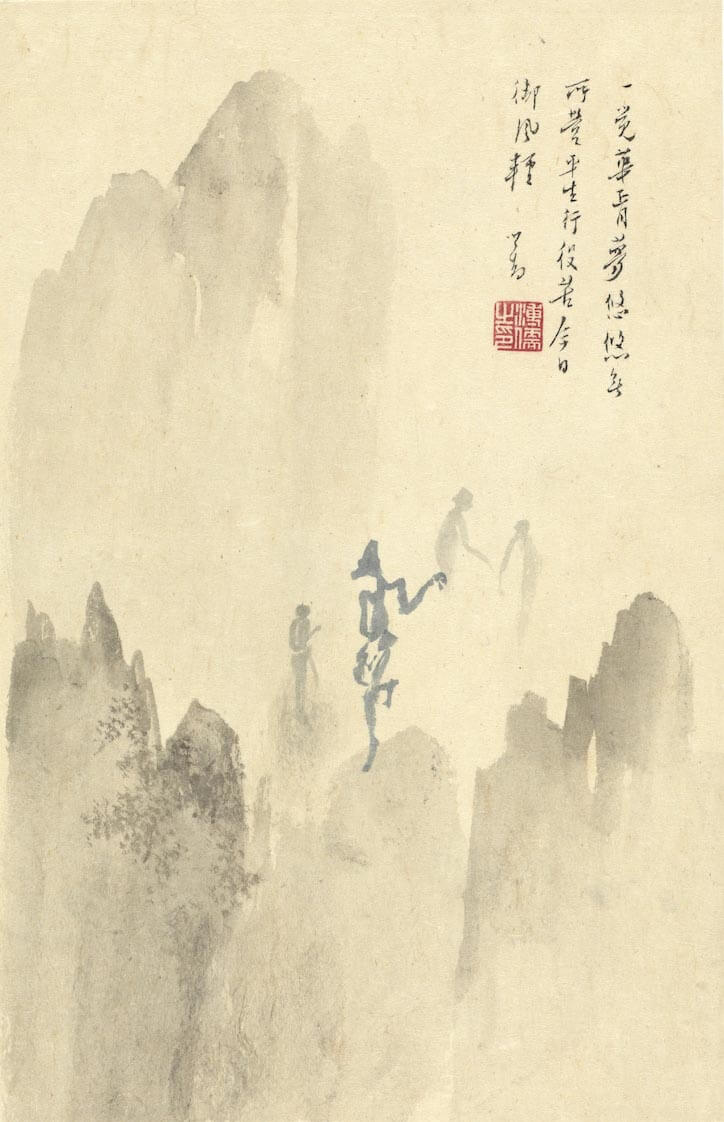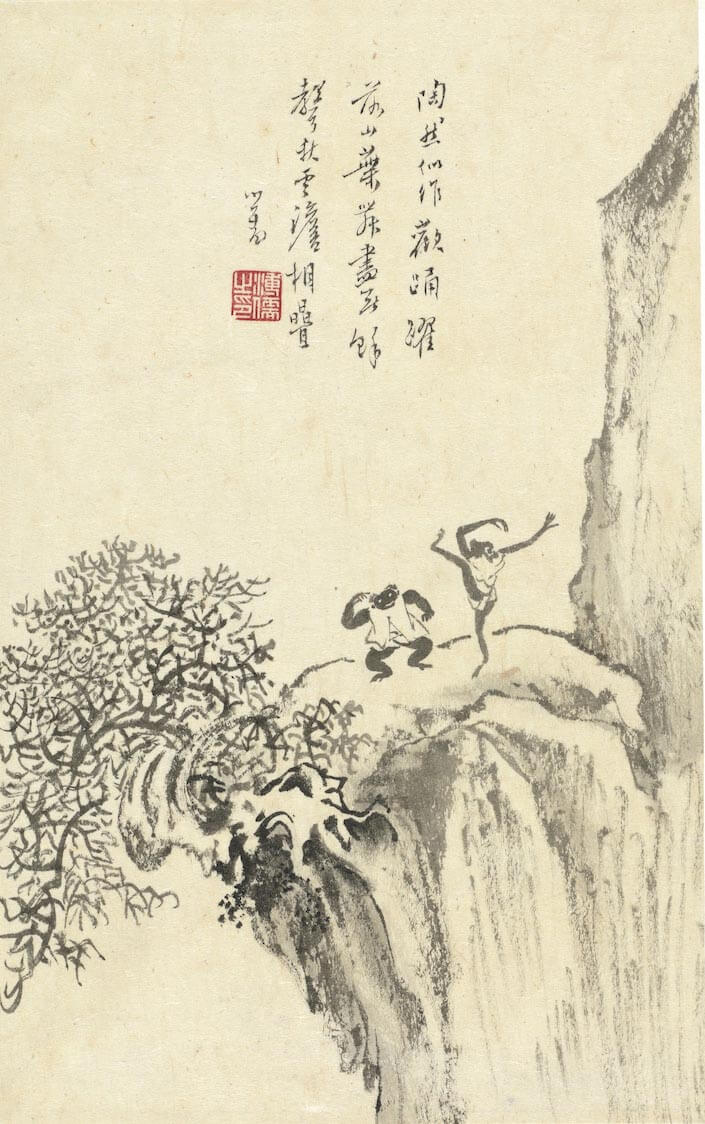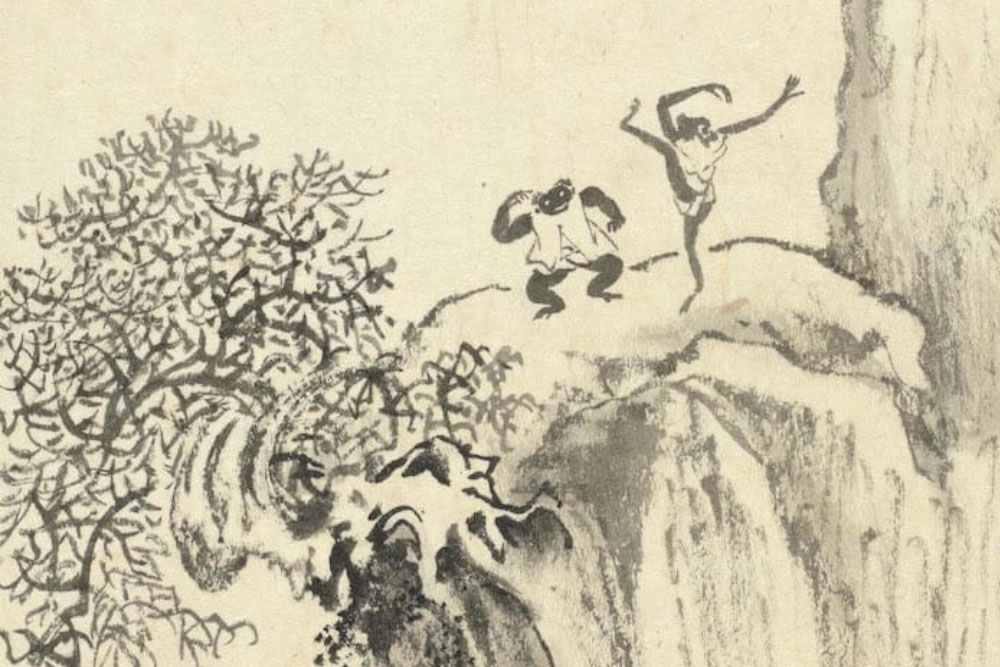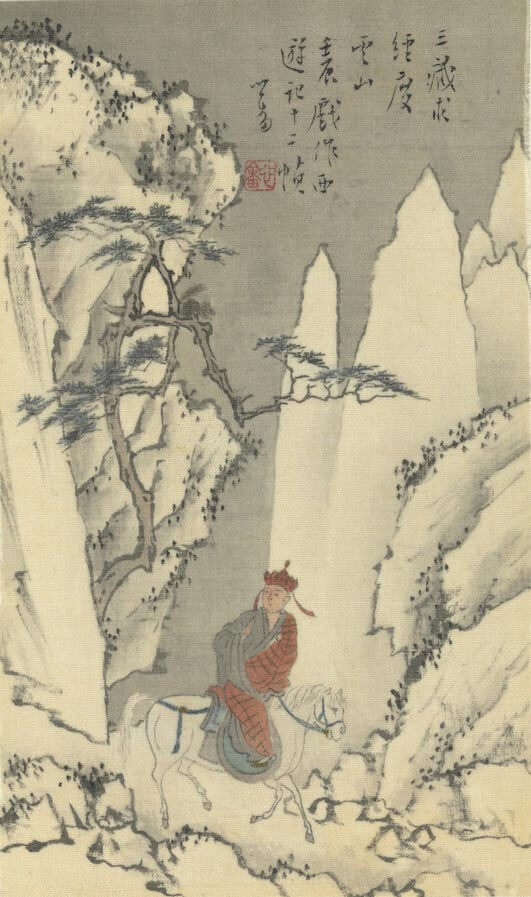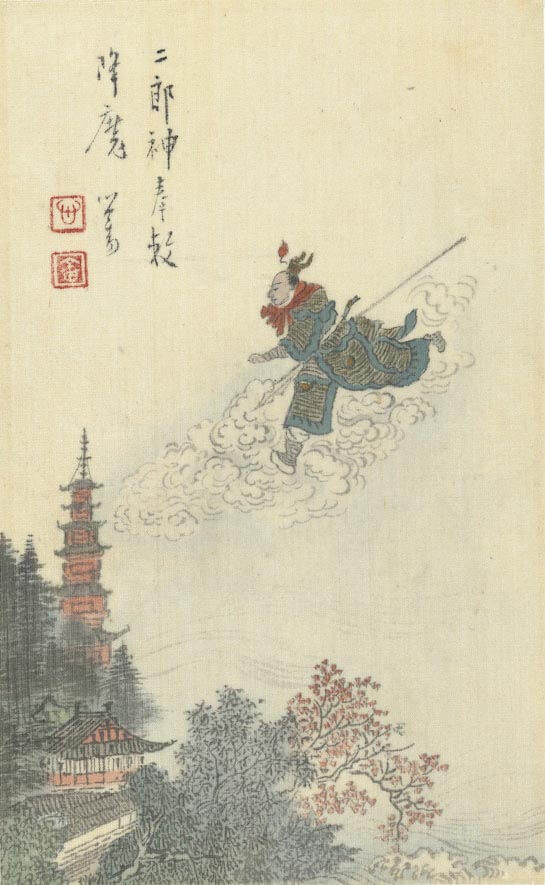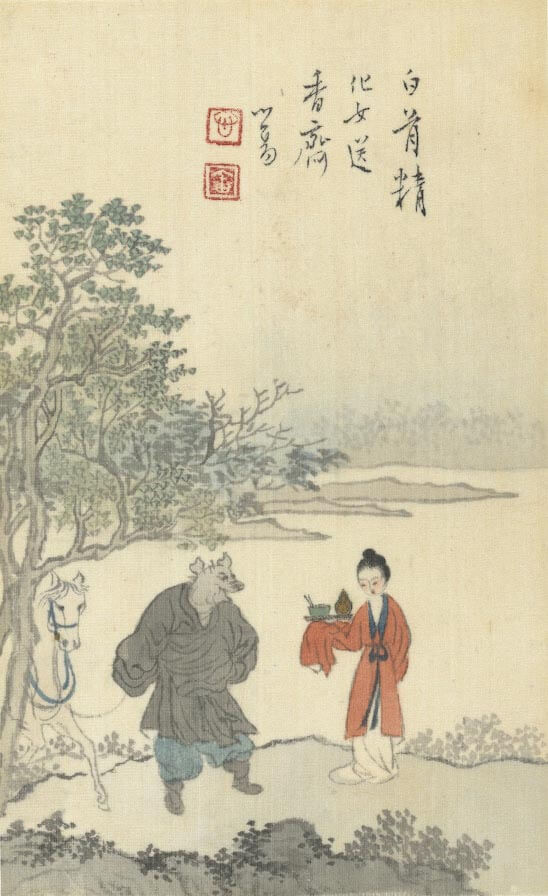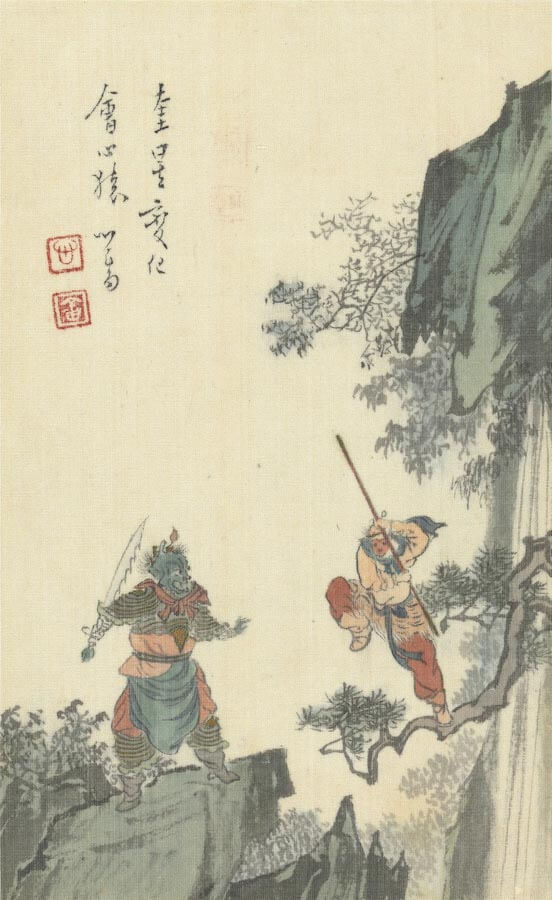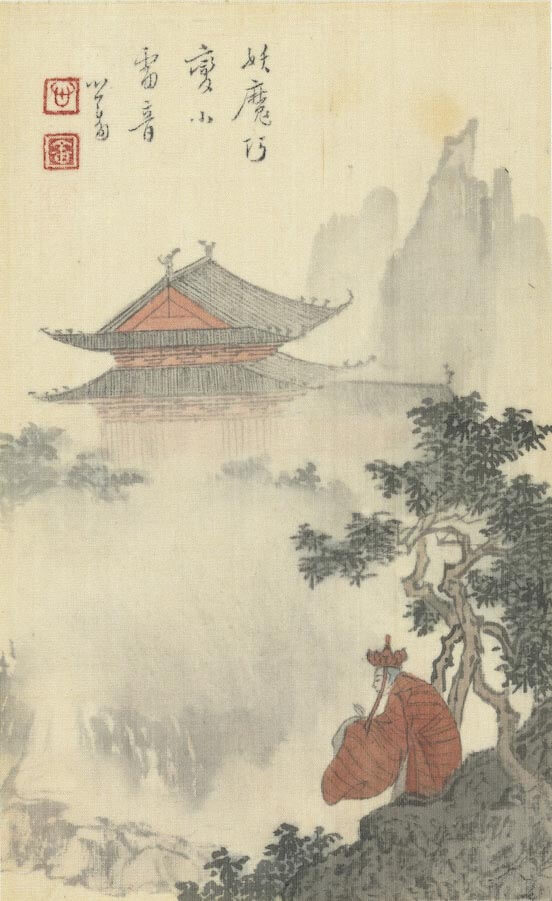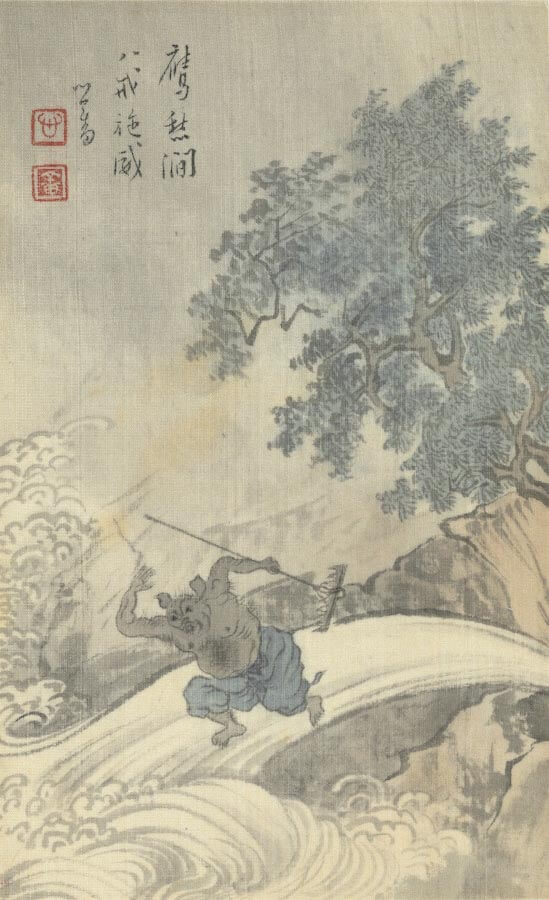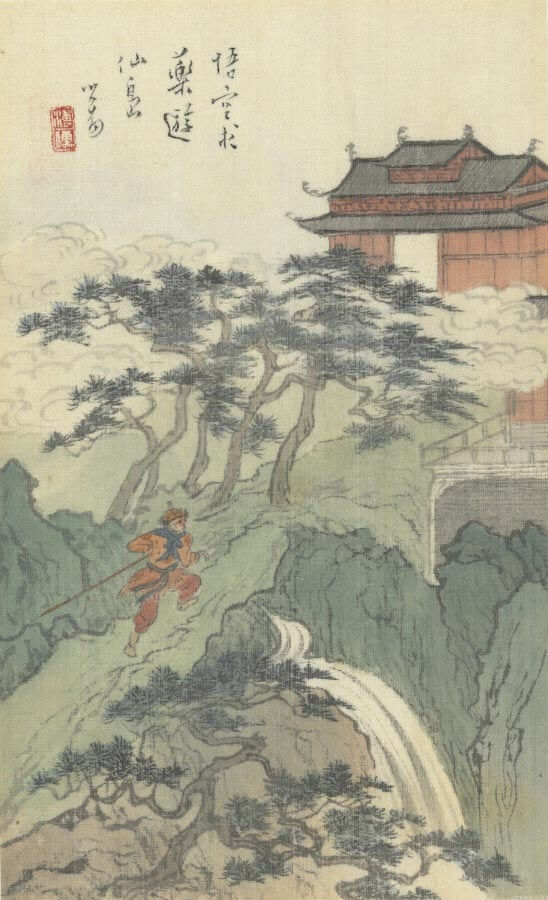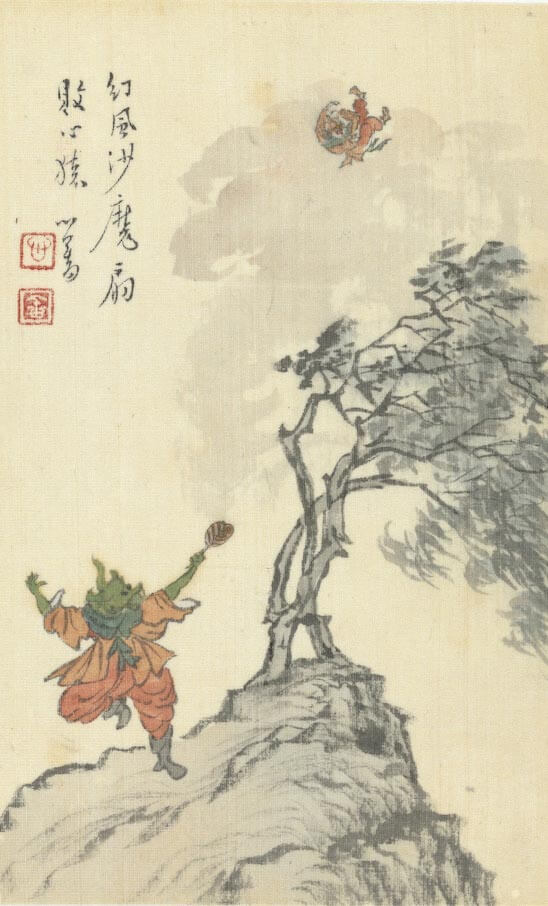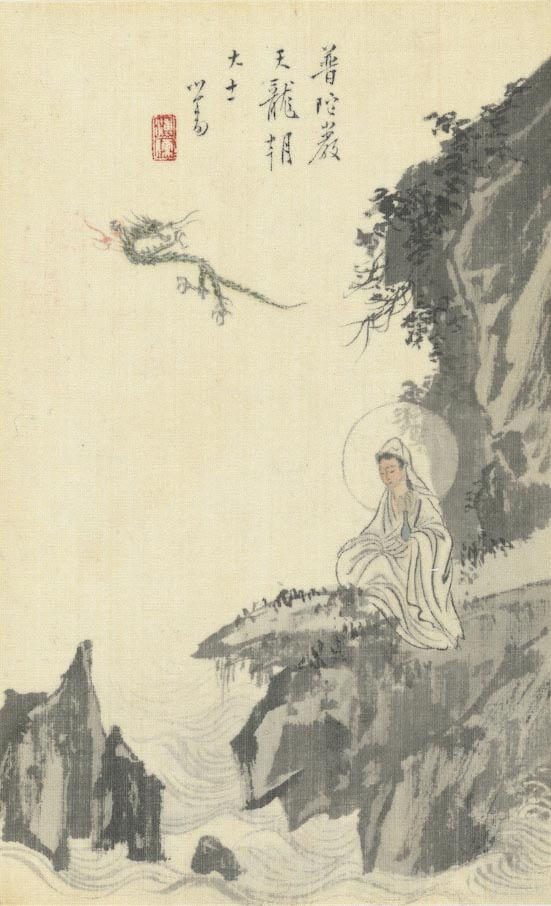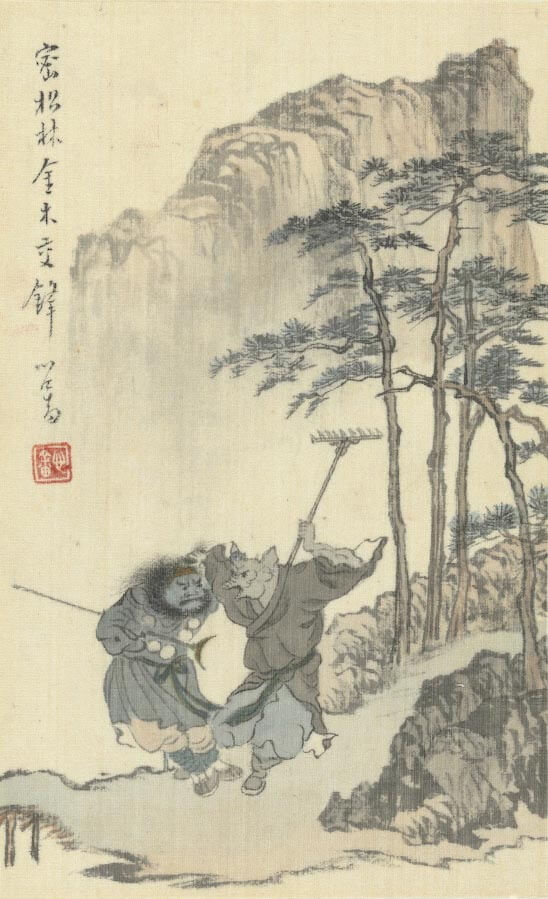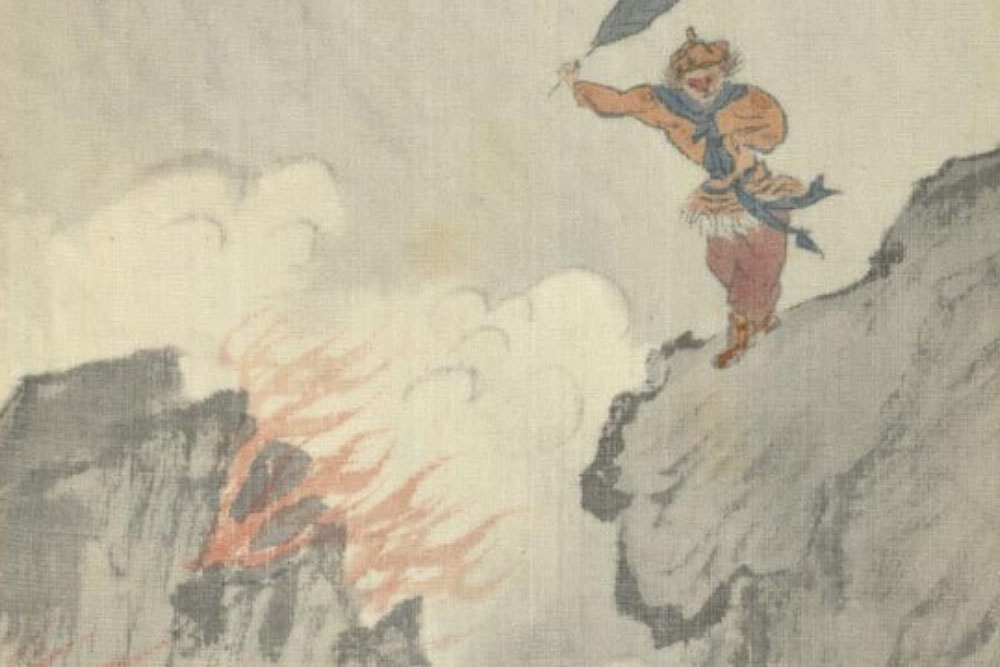Records of the Unusual in Painting
One of the most unconventional subjects in the painting of Pu Hsin-yu is his depiction of the ghostly and supernatural realm. After traveling to Taiwan, he often enjoyed reading such traditional exotic novels as Journey to the West, Strange Tales from a Chinese Studio, and The Classic of Mountains and Seas, based upon which he frequently did illustrations in painting. Sometimes he did so to offer a sarcastic view on the state of current affairs. Not only are they interesting to appreciate, they therefore also have deeper meaning. On display in this part of the exhibit are such works of his as "Strange Ghosts," "Journey to the West," "Stories from Extensive Records of the Taiping Era," and "Illustrations from The Classic of Deities and the Extraordinary." These paintings may be small in size, but Pu Hsin-yu's brush and ink are unusually pure and elegant, making them a fresh and unusual sight.
In addition, this part of the display features paintings that belong to the subject of deities and deified figures. For example, there are hanging scroll depictions of the demon queller Zhong Kui, the bodhisattva Guanyin, the God of Examinations, the God of Long Life, and the general Guan Yu. Whether done in ink and colors or just vermilion ink lines, all have a refined touch and mesmerizing power, the forms ever varied and fully exhibiting the breadth and depth of Pu Hsin-yu's insight into traditional Chinese figure painting.
- Stories from Extensive Records of the Taiping Era
- Pu Hsin-yu (1896-1963), Republican period
- Album leaf, ink and colors on paper, 24.6 x 15.4 cm
- Entrusted from the Cold Jade Hall
Extensive Records of the Taiping Era was written by Li Fang in 978 during the Song dynasty. The book recorded anecdotes and legends as well as apocryphal events and unofficial history from the Han dynasty up to the early Song period. With more than 500 entries, it had a major impact on the development of later Chinese novels and dramas.
Pu Hsin-yu's illustrations from this book includes 26 paintings, each of which is done in light and untrammeled brushwork. In addition to illustrating the main subject of a story, he also transcribed an abridged account from the book. As such, it expresses the idea in literati painting of "text and image complementing each other."
- Ink Play of Cat and Mice
- Pu Hsin-yu (1896-1963), Republican period
- Hanging scroll, ink on paper, 57.8 x 28.5 cm
- Donated by Mr. Liu Te-feng
In this painting, anthropomorphic mice take advantage of a cat fast asleep to gather and cavort. One of the mice wearing clothing appears to move, while one in front one holds a book as if engaged in the human activity of reading. Of the two other mice in the foreground, one raises a cup to drink and the other apparently has had too much to drink and is asleep.
The brushwork throughout this work is abbreviated, the moist and dry ink integrated. Although no accompanying inscription explains the artist's intent, Pu Hsin-yu seems to have been inspired for some particular reason and chosen the humorous relationship between cats and mice to satirize some particular behavior of people.
- Zhong Kui in Vermilion
- Pu Hsin-yu (1896-1963), Republican period
- Hanging scroll, vermilion ink on paper, 86.6 x 41.2 cm
- Entrusted from the Cold Jade Hall
This painting done solely in red ink depicts the demon queller Zhong Kui wearing the clothing of an official. A mountain spirit he has already vanquished walks by his side carrying a bundle of calamus, wormwood, and ficus. The compositional formula of Zhong Kui walking with a mountain spirit is one that Pu Hsin-yu did several times. In some versions, the mountain spirit's line of sight is to the upper left focusing on a pair of spiders hanging down that symbolize in Chinese the idea of "double happiness." Pu left behind a large number of paintings on the subject of Zhong Kui, indicating his busy life at the time of traditional festivals to repay others' favors.
- Strange Ghosts
- Pu Hsin-yu (1896-1963), Republican period
- Album leaf, ink on paper, 21.9 x 14.1 cm
- Entrusted from the Cold Jade Hall
In this album of eight small paintings by Pu Hsin-yu done in 1959 at the age of 64, the ghosts all look different in appearance, such as being naked and wearing a short skirt or adorned with long robes. One is also shown flying or diving through the air, apparently able to move at will. The brushwork in each work is exceptionally lively and interesting.
Although titled as ghost paintings, they actually are a reflection of Pu Hsin-yu's situation later in life, insinuating that he himself had accepted the fate that had befallen him. In other words, the spirits in the mountains are a metaphor for the dilemma of entrapment in trying circumstances, demonstrating his indifference and letting go of expectations in life.
- Journey to the West
- Pu Hsin-yu (1896-1963), Republican period
- Album leaf, ink and colors on silk, 17 x 10 cm
- Entrusted from the Cold Jade Hall
Pu Hsin-yu greatly enjoyed reading the early Chinese novel Journey to the West and several times did albums of small paintings on it. This album with twelve leaves is from 1952, when he was 57 years old. The paintings, however, do not follow the order in the classic established by the Ming dynasty author Wu Cheng'en. Rather, the scenes appear to be at random and have been freely arranged by the painter according to his interest in particular narrative details.
The compositions are simple and the brushwork lively and animated in the paintings. Some of the figures can be related to roles found in Peking Opera, which is not without coincidence. However, compared to the painting illustrations of other "popular" novels, the illustrations here have the lofty and refined air of the literati.


